Canadian Troops Win Praise From McNaughton and Churchill
Great Railway Yards in Rome are "in Twisted, Smoking Ruins"
bombed by Mediterranean Allied Air Force Bombers. Photo: Library of Congress
[Please click here to learn more about Operation Strangle (World War II) at Wikipedia.]
Allied troops, on more than one track, are heading north at a steady pace. Canadian newspapers are full of the news and The (Montreal) Gazette is no exception. Though I highlighted the work of Gazette correspondent Lionel Shapiro in the previous post, boldly expecting that his lengthy columns would continue to inform readers each day, I was wrong. He'll be back in Thursday's spread, I'm (almost) sure.
In the meantime, fresh news stories about Allied progress on various fronts - including trusty Canadians - continue to pile up on our doorstep. Enjoy a good read. And the weather, 'fair and warm', isn't too bad either!
Major-General G.G. Simonds, mentioned above, in a Jeep in Italy.
As found at 'Canadians in the Italian Campaign, 1943 - 45'
Library and Archives Photo, MIKAN No. 4234029
Yes, "Canadians push ahead," but it isn't a walk in the park:
Note the front line, south of Catania, as of July 23
Map as found at 'The Daily Chronicles, WWII'
The news article continues:
More About the Bombing of Rome in World War II
On July 19, 1943, during Operation Crosspoint,[9] Rome was bombed again, more heavily, by 521 Allied planes, with three targets, causing thousands of civilian casualties (estimates range between 1,600 and 3,200 victims).[10] After the raid, Pius XII, along with Msgr. Montini (the future Pope Paul VI), travelled to the Basilica of Saint Lawrence outside the Walls, which had been badly damaged, and distributed 2 million lire to the crowds.[11][12] Between 11 a.m. and 12 noon, 150 Allied B-17 Flying Fortresses attacked the San Lorenzo freight yard and steel factory. In the afternoon, the second target was the "Scalo del Littorio" on the northern side of Rome. The third target was the Ciampino Airport, on south-east side of Rome.
On July 19, 1943, during Operation Crosspoint, Rome was bombed again...
Propaganda inscription on the wall translated as "Work of the Liberators"
Source - Wikipedia, Bombing of Rome
The article, Rome Crippled as Transit Hub, from The (Montreal) Gazette continues:
Modern Day Photographs of Catania
By G. Harrison, September 2023
The Museum of Allied Landings in Sicily, 1943
Preparation for Landing, July 1943 (U.S. troops near Gela?)
A landing craft, mechanised (LCM) is preparing to load up.
Note 'Jacob's ladders' (i.e. ropes) for climbing up or down
Oran, Algeria 1942 (Canadians in Combined Ops handled landing
crafts with U.S. and British troops east of Oran, Nov. 1942)
LIFE Magazine (Aug. 2, 1943) on display in the Museum of Allied Landings
U.S. reconn photo depicts where Canadian Flotillas of landing crafts (the 80th
and 81st) served Monty's British 8th Army from July 10 - August 7, 1943.
At the museum, a detailed map of GEORGE Sector (80th Flotilla). Good
reconnaissance by Combined Operations Pilotage Parties (COPP) perhaps?
This street points toward Mt. Etna, so I was told while enjoying a cold beer
At the Villa de Romeo Hotel I always felt I was being watched!
Paul Harrison (left) and his Dad Gord representing Team Canada
at the Villa de Romeo. Photos by GH
News clippings from The Gazette continue:
"Shh." "SHH." Source: Yale University Press London, Blog
For those who wonder how films can be used in an invasion....
And if Betty Grable's film isn't available, how about "Casablanca?"
Glen Miller and his orchestra, mentioned on the above movie advert, was very much welcomed in Sicily. Yes, Glen made the rounds with Canadian sailors (just not in person). My father writes:
Just another little sidelight. We had acquired a portable record player in a green round box with an ample supply of records by Artie Shaw, Glen Miller, Vaughn Munroe and Tommy Dorsey. We had to wind it by crank* and we cranked it so much we broke the handle. Then we had to spin the record with our index finger. It was quite a chore to get the correct speed but with time we achieved it. How I wish I had that record player and records today. "Dad, Well Done", page 34
*Good thing the record player could be operated "by crank." There was no hydro in the 'cattle cave' in which the Canadian sailors stayed for about 3 weeks while operating landing crafts at GEORGE Beach. Map of the beach (at modern day Fontane Bianche south of Syracuse, Sicily, appears next as found at "Allied Landings of Sicily, 1943" Museum at Catania:
Email editor at 'gordh7700@gmail.com' for more details about Canadian
sailors and their cattle cave abode during Operation HUSKY. GH
Shortly after returning to Canada on leave in December, 1943, my father was interviewed by The Brantford Expositor. He said the following about the importance of receiving mail from friends and family:
Nazi atrocities abound!
I attended a book launch recently (November 2023), came home with the book below, about a young boy who survived "the twentieth-century Nazi genocide of the Jews of Europe" while risking his life to feed his family.
The “duck” (DUKW), an army-sponsored vehicle. The DUKW moved on
rubber tires ashore and was propeller-driven when afloat. More info here.
Canadian troops in Sicily. "I think this is the clutch!" "Better be, eh!"
Album 62 (No. 23799), attributed to Stirton (CAFU), August 30, 1943
Another detailed news column by Canadian war correspondent Ross Munro of the Canadian Press:
Munro is "typing a story in the battle area between Valguarnera and Leonforte,
Italy in August, 1943. Canadian Army Film Unit (CAFU) photograph (22816)
Citizens had to flee their homes - empty handed, without delay - and head to the hills in some cases as Allied troops quickly advanced. "In one deserted picket boat a dinner was cooking on the stove when the British motor gunboat crew boarded it." So then, what's for dinner?
Members of the Canadian Army debarked from British landing crafts on the southern coast of Sicily. Meanwhile, members of the Canadian Navy (having volunteered for Combined Operations beginning in December, 1941), manned Canadian flotillas of landing crafts (flotillas 55, 61, 80 and 81) from which Monty's 8th Army debarked beginning July 10 on the eastern shores of Sicily. Significant map follows depicting Allied landing zones:
Can. troops landed west of Cape Passero (see SE tip of Sicily); four flotillas of Can.
sailors transport British troops and all materials of war north and south of Avola
Original edition of Combined Operations (top left, re the Canadian role in
Comb Ops) rests beside the draft of the second edition. Creators, Clayton &
Jewell Marks, are from London Ontario Canada
The news article "Churchill Lauds Canadian Troops" continues:
To read about a Canadian pilot who paid the ultimate price for flying a "little Spitfire" over Italy during WWII, please visit Editor's Research: FO John Anthony Vasicek RCAF.
Above 2 photos are from the collection of Charles and Bessie Vasicek
E. J. Harrison (1923 - 2000) lived in Norwich, Ontario. I really
liked calling her 'Ma.' She never complained!
Clapper's Column continues:
More will soon follow from The Gazette concerning Operations HUSKY and BAYTOWN.
Please click here to view Research: Three Months in the Mediterranean, 1943 (13)
Unattributed Photos GH
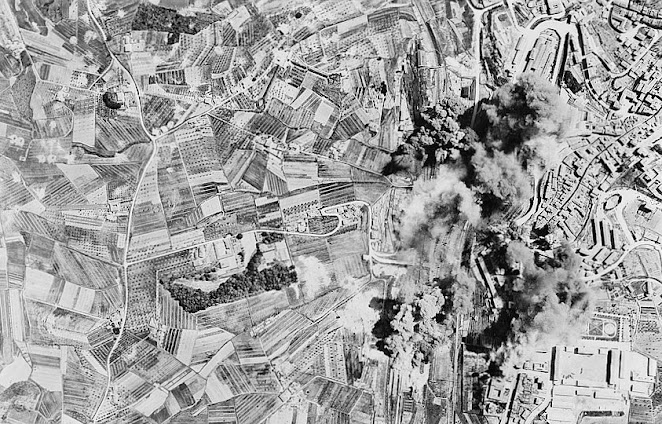




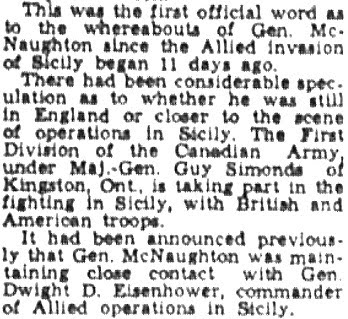





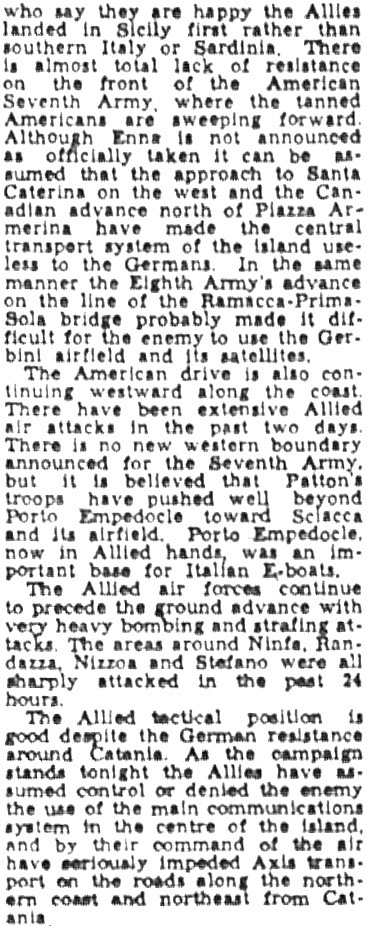












































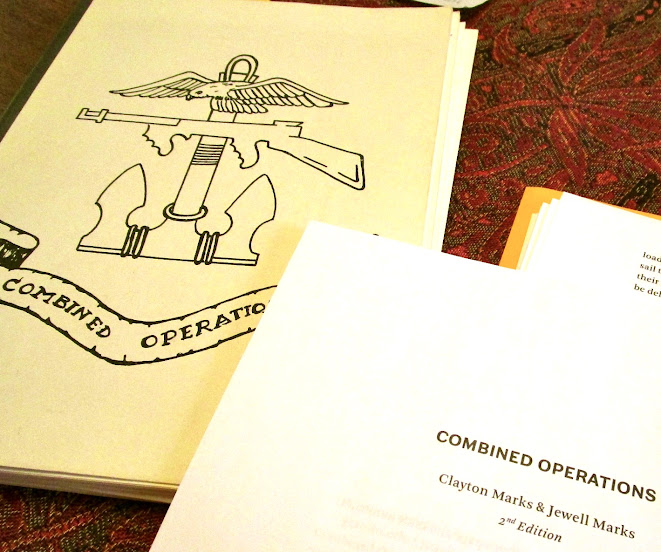

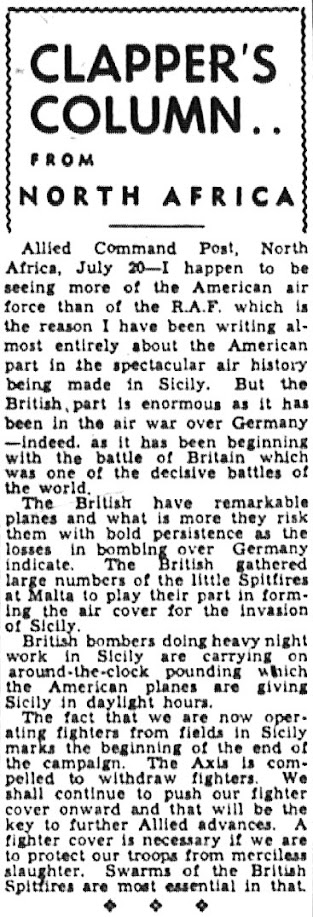




No comments:
Post a Comment